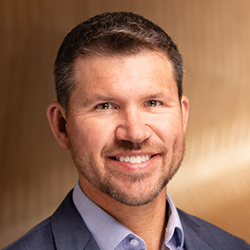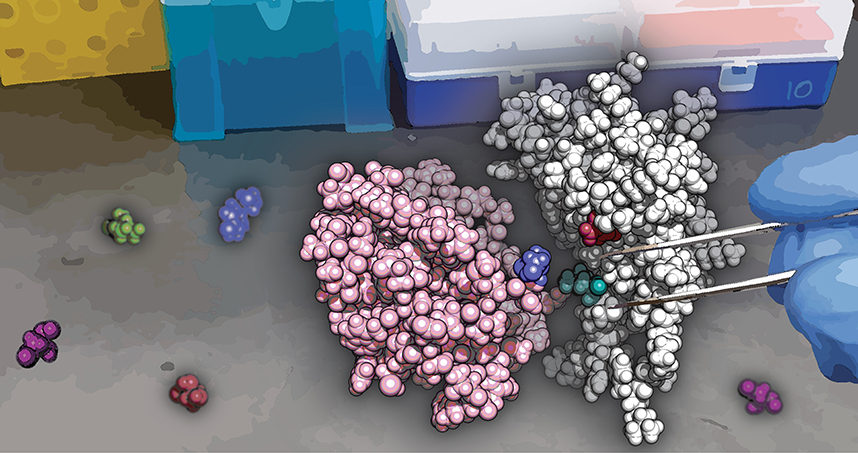New Method for Splitting Proteins Could Lead to Safer and More Effective Bioengineered Systems
SPORT is a computational tool for designing proteins
Advances in biotechnology and medicine are typically limited by the time, cost, and effort required to evaluate new potential ideas. New research titled “Computation-guided Optimization of Split Protein Systems” published February 1 in the journal Nature Chemical Biology demonstrates the potential for harnessing computational design to reduce these barriers and, ultimately, enable the development of better products, safer and more effective medicines, and improved biomanufacturing.
Proteins are the workhorses that run all biological systems. Controlling when and how a protein performs its function provides bioengineers with exquisite control to manipulate or monitor a biological system. In this paper, researchers at Northwestern and the University of Wisconsin–Madison demonstrate a powerful design strategy for splitting bioactive proteins into fragments that only recombine under specific conditions. Currently, building such systems and tuning them to work as needed is laborious, slow, and often times impossible. However, a team led by Northwestern Engineering’s Joshua Leonard and Srivatsan Raman at UW–Madison developed Split Protein Optimization by Reconstitution Tuning (SPORT), a computational tool for accelerating the design of high performing systems. Graduate students Taylor Dolberg (Northwestern) and Anthony Meger (UW-Madison) spearheaded the development of SPORT.
 SPORT enables one to custom-engineer split proteins for biotechnology and synthetic biology applications ranging from diagnostics to cell-based therapies.
SPORT enables one to custom-engineer split proteins for biotechnology and synthetic biology applications ranging from diagnostics to cell-based therapies.
“For example, by fusing each half of a split fluorescent protein to two proteins that come together in the presence of a specific chemical, one can build a sensor that fluoresces only when that chemical is present,” said Leonard, associate professor of chemical and biological engineering and Charles Deering McCormick Professor of Teaching Excellence.
The approach can also be used to control other useful functions, such as an enzyme’s catalytic activity or expression of specific genes in a cell, he added.
“The key advantage of SPORT is its generalizability. SPORT is based on fundamental principles of protein biophysics—the relationship between protein stability and function. Although each protein is unique, it turns out the broad rules on splitting a protein are by and large common across different proteins,” said Raman, assistant professor of biochemistry and an investigator at the Great Lakes Bioenergy Research Center.
To date, most split protein systems have been developed through experimental screening approaches. However, a split protein design that works in one particular application, such as genetically engineering a bacterium, may not work in others, such as genetically engineering a human cell-based therapy. Because these approaches rely upon random screens, the high failure rate has led to dead ends, and design principles for “fixing” poorly performing designs have been lacking.
SPORT uses computational protein design to consider huge numbers of potential designs before recommending a small set for experimental testing. The research shows this approach vastly streamlines the creation of split protein systems that are optimally designed for a given application.
“Going forward, one of our goals is to make SPORT a webserver for the research community. Any researcher can then plug in their favorite protein sequence and the webserver will return mutations for further experimental testing that will optimally split the protein,” Raman said.
“By lowering the cost, time, and effort required to build a new or optimized split protein system, SPORT will accelerate the use of this powerful technology for applications in synthetic biology, biotechnology, research, and medicine,” Leonard said.
This project represents a collaboration that arose through a connection at the first Central US Synthetic Biology Workshop, which Leonard and Raman co-organized with colleagues Michael Jewett from the McCormick School of Engineering and UW–Madison’s Brian Pfleger. The event was hosted by the Center for Synthetic Biology at Northwestern.
“This was a fun new collaboration,” Leonard said. “This connection represents the incredible potential we have to grow and link synthetic biology expertise in our region, as well as beyond.”
This work was supported in part by a grant from the National Institute of Biomedical Imaging and Bioengineering, part of the National Institutes of Health (EB026510). Also, this work was supported in part by a grant from the US Department of Energy to the Great Lakes Bioenergy Research Center (DE-SC0018409).
